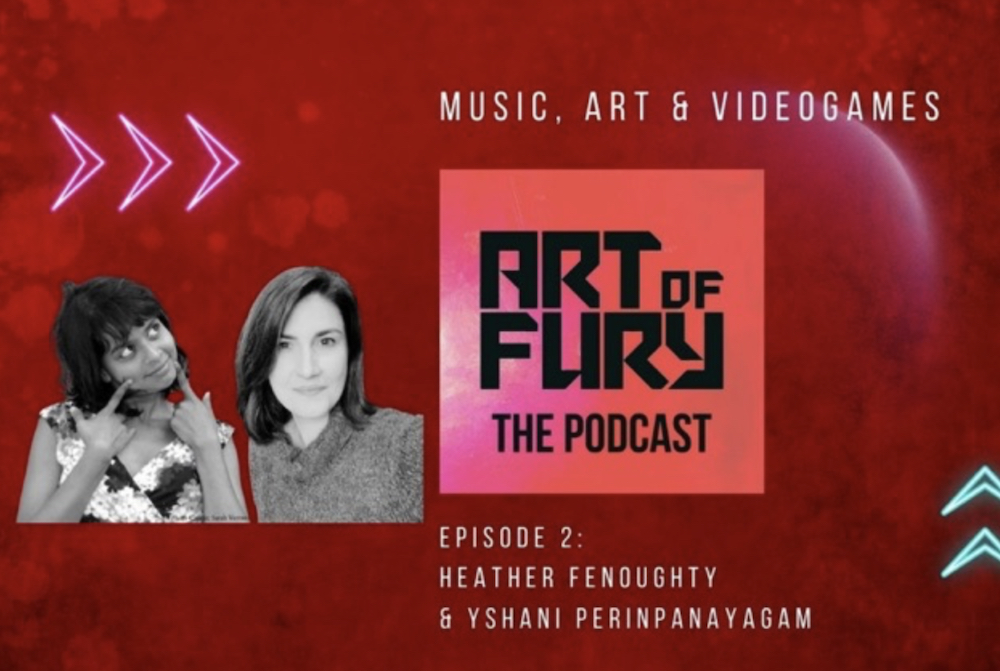I talked with a group of lovely and fascinating women on the Art of Fury podcast. We discussed all things music for games and interactivity – listen here on Apple Podcasts, or here on Soundcloud. Yshani, Emma, Leila and I had a brilliant chat about:
Here we talked about the challenges presented by events not happening at the same time or over the same duration from one performance, interaction or game playthrough to the next. Sound can be structured and programmed to take this into account.
How The Techniques We Use for These Media Show Intentionality and Create a Connection with the Audience
Here we discussed how those structures and methods of programming sound to take into account the fluidity of events can give the impression of intentionality – that the sound was deliberately meant to happen always at that specific point in sync with that event, whenever it happened, and that by being this obviously intentional, it brings a sense of connection: it’s clear there’s a creator, an author, or an artist behind the experience – whether it be a performance or a playthrough, and that creator has made this experience for you, the audience.
By engaging in the experience, and by knowing there’s an author who’s deliberately made it for that audience, there’s a connection made through the bridge of the experience. It’s a sort of equilibrium of awareness and acknowledgement that the other exists and is here only because of each other.
I think this is what I meant anyway. It’s a tricky way of saying what’s essentially a very simple concept.
Collaboration Between Different Media Worlds, eg. Games and Theatre
A lot of the techniques used for these different media worlds are very similar, but composers rarely move between them in practise. It could be pigeonholing, or it could be that composers tend to stick with what they know best or where the process is most familiar. It could simply be that you work most often with who you know, so you’ll keep working on the same kind of work that way. It could be that it’s difficult to move into different media worlds because they’re often so effing cliquey and each looks down on the other. Who knows. I like working in all of them though.
Being a Generalist vs a Specialist and Not Feeling Quite Like You Fit in Properly Anywhere
In working in all these different areas, I get the feeling quite often that I don’t really ‘fit in’ anywhere. To be honest though, I’ve mostly felt like this all my life so it could be me projecting.
Labelling and Language
I think I went a little bit off on one here, but it’s quite an interesting topic that I keep coming back too when I’m left to think for any length of time, about anything really. The way we label a thing brings with it a set of connotations, and by categorising anything we create separation between those categories, and maybe a concomitant difficulty in describing anything that transcends those categorisations and separations.
For instance, I doubt that those who work solely in theatre would categorise themselves as working in the ‘media’. Why is that? There’s a great deal of crossover skill for many career-paths between theatre and other arenas such as TV and interactive experience. Theatre itself is a means of telling stories through spoken word, actor performance, lights, music, sound, design, costume, makeup… And yet it’s most often classed as the ‘arts’.
And don’t get me started on the perceived (somewhat classist, elitist) distinction between ‘the media’ and ‘the arts’. I do think its changing a little bit more in recent times though. Maybe we realise the potential that we in our various creative story-telling industries are stronger together?
What is art anyway?
I struggle to put into words what I think art is, but I gave it a shot!
Hope you enjoy the podcast as much as I enjoyed the chat.
Photo credit: Leila Johnston

